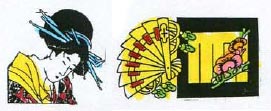|

This story was published in Radio Recall, the journal of the Metropolitan Washington Old-Time Radio Club, published six times per year.
Click here to return to the index of selected articles.
|
|
 OLD TIME RADIO IN JAPAN OLD TIME RADIO IN JAPAN
By Dr. Yamashita Moriyuki © 2009
(From Radio Recall, April 2010)
Dr. Moriyuki is the head of the Audiovisual Department at the University of Tokyo and one of the leading experts on Pacific broadcasting. This article was first presented as an original paper at the Pan-Pacific Radio Symposium in San Francisco, CA on November 4, 2009 and is reprinted here with the permission of its author.
The development of radio broadcasting in Japan did not have significant growth until the end of World War I, as was true of most industrial countries in the East. Military use of wireless and radio-telephones was limited to imported British DeForrest transmitters and German Telefunkens, supplemented with some domestic equipment. Although short-wave transmission did dominate the 1920s, the Japanese public demand for better broadcasting services eventually led to improved circuitry and range.
By 1931, feeder networks and overseas remotes were coming into usage and better performance in transmitters became more common with the introduction of the copper-to-glass seal tube introduced in Japan in 1932. There were only three networks, one of which was the audio platform for the Emperor and the Royal Family, thus dispensing more propaganda than entertainment.
Following Japanese military successes and the invasion of China in 1937, millions of Japanese citizens sought better news programs on their radios, but even these military bulletins were heavily censored by the Emperor and his advisers.
It is not the purpose of this paper to enumerate all the programs produced in Japan during our “Golden Age of Radio” but rather to briefly summarize some of the more popular categories offered to the public. Whenever possible, similarities or differences, compared to American programs will be described.
JAPANESE SOAP OPERAS
While Japanese radio did not have “soap operas” as such, there were a number of dramatic serializations similar in tone and content to those broadcast in the U.S. at that time. Since these programs were primarily sponsored by silk producers, they were referred to as “silks.”
Many of these programs were for and about women but Japan did not permit women on radio, prior to the emancipation of women following World War II. Therefore men filled these roles at the microphone. When Japan became allied with Italy and Germany in 1942, there was consideration given to importing Italian castrati for these roles until it was determined that Italy had discontinued this method of producing feminine voices in the early 1800s.
Among the popular “silks” were Mama-san Perkins, When a Geisha Marries, and Our Gal Sake.
The first of these told the poignant story of a n old woman who operated the Riceville Lumber Yard. Since she only stocked lumber from Bonsai trees, it was a small operation and she kept her entire inventory under her tea table.
The second serial, originating from Radio Station OYUU in Kyoto, daily related the efforts of Tall-Lotus, a 6 foot 2 inch geisha , to find a suitable (and sizable) husband in the Land of the Cherry Blossoms. Our Gal Sake , with Kim Mona in the lead, portrayed the tribulations of a lady pearl diver off Honshu Island who could find only worthless...
Yes, this is an April Fool’s Joke, not a historical view of Japanese OTR. Your editor first wrote this piece in 1984 and published it in Vol XII, No #2, of NARA NEWS. (The original article went on for three more pages.) Since 26 years have passed since that debut, it was thought worthy of re-telling.
|